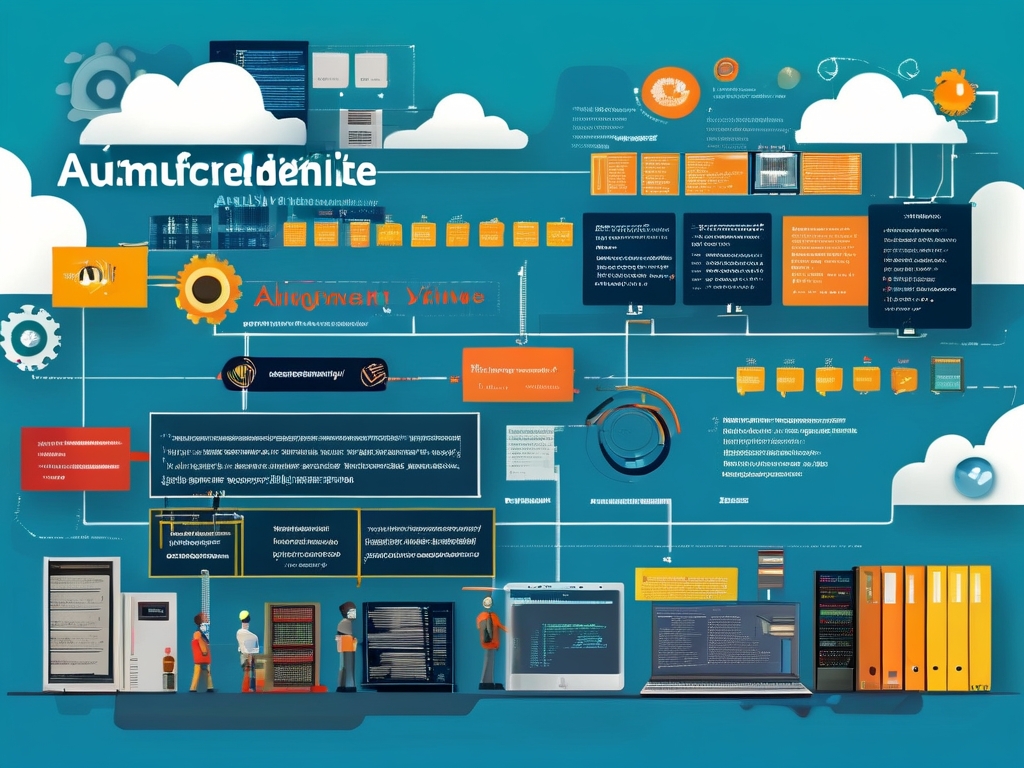In today's fast-paced software development landscape, automated deployment has emerged as a cornerstone of efficient workflow management. This article explores the fundamentals of automated deployment, its practical applications, and why modern development teams increasingly rely on this methodology to streamline operations.
Understanding Automated Deployment
Automated deployment refers to the process of using specialized tools and scripts to transfer software applications from development environments to production systems with minimal human intervention. Unlike traditional manual deployment methods, which require developers to execute repetitive tasks, automated systems ensure consistency while reducing the risk of human error.
A typical automated deployment pipeline includes stages such as code compilation, dependency resolution, environment configuration, testing, and final release. For instance, a Jenkins pipeline might incorporate the following workflow:

pipeline {
agent any
stages {
stage('Build') {
steps {
sh 'mvn clean package'
}
}
stage('Test') {
steps {
sh 'mvn test'
}
}
stage('Deploy') {
steps {
sh 'scp target/*.war user@prod-server:/opt/tomcat/webapps'
}
}
}
}
Key Advantages for Development Teams
- Enhanced Efficiency: Automation eliminates time-consuming manual processes, allowing teams to deploy updates multiple times daily.
- Improved Reliability: Predefined workflows ensure identical deployment patterns across environments, mitigating configuration drift.
- Faster Error Detection: Integrated testing phases identify issues early in the deployment cycle, reducing debugging time post-release.
Implementation Strategies
Successful adoption requires careful planning. Teams should begin by containerizing applications using tools like Docker to ensure environmental consistency. Version control systems like Git must be integrated with deployment pipelines to trigger automatic builds upon code commits.
Consider this GitHub Actions configuration that activates deployment when merging to the main branch:
name: Auto-Deploy
on:
push:
branches: [ main ]
jobs:
deploy:
runs-on: ubuntu-latest
steps:
- uses: actions/checkout@v3
- name: Deploy to AWS
run: |
./configure-aws-cli.sh
s3 sync ./dist s3://production-bucket
Overcoming Common Challenges
While automation offers significant benefits, organizations often face hurdles during implementation. Legacy systems may lack API support for modern tools, requiring customized adapters. Security concerns also arise when automating credential management, necessitating solutions like HashiCorp Vault for secret storage.
Future Trends
The integration of artificial intelligence into deployment systems is gaining momentum. Predictive analytics now enable tools to anticipate infrastructure needs, while self-healing architectures automatically roll back faulty deployments. Platforms like Kubernetes have already incorporated declarative deployment models, where systems continuously align actual states with desired configurations.
As cloud-native technologies evolve, automated deployment will increasingly intersect with serverless architectures and edge computing. Development teams that master these tools today position themselves to lead in an era where deployment frequency and reliability directly correlate with business success.
In , automated deployment represents more than just technical optimization—it embodies a cultural shift toward continuous improvement in software delivery. By embracing these practices, organizations can achieve faster time-to-market, higher-quality releases, and ultimately, greater competitive advantage.










